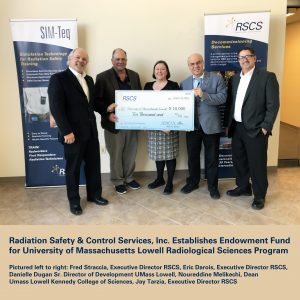 For Immediate Release
For Immediate Release
Radiation Safety & Control Services, Inc. (RSCS), headquartered in Seabrook NH, established an Endowment Fund for the University of Massachusetts Lowell and made the first $10,000 installment payment towards this perpetual scholarship fund for undergraduate and graduate students within the Radiological Sciences Program. The establishment of this fund continues a legacy of support by RSCS, whose Principles, Jay Tarzia, Fred Straccia, and Eric Darois, are alumni of the Health Physics Programs of the University. In the past 10 years, RSCS has supported the University through equipment donations and internship programs, some of which have led to long-term employment for interns with the company. In addition, RSCS supported thesis research projects for two UML Masters-degree candidates. The first of these was in the development of an instant-developing radon-in-air detector and the second was the development of a radiation detector for identifying a nuclear criticality event. For both of these projects, RSCS provided the students with intellectual and financial support which led to the completion of their degrees and successful entry into the workforce.
“Thanks to the generous support of RSCS, UMass Lowell will establish a new endowed scholarship for students in the Radiological Sciences Program of the Department of Physics and Applied Physics. UML is nationally-recognized for its programs in radiological sciences, and this scholarship will allow us to attract and support talented students. We are fortunate to have alumni like Jay, Fred, and Eric who understand the critical importance of developing talent and who are taking a leadership role in building the pipeline of future professionals in the field.”
-Noureddine Melikechi, Dean of the Kennedy College of Sciences at UML
In the past year, RSCS has also partnered with the University to provide a nuclear industry AP3 approved training facility for radiation technicians to undergo evaluations of their competencies for standard nuclear power outage tasks. This collaboration streamlines the process by which rad techs obtain their qualifications to work at nuclear utilities, relieving the burden of site-specific training and allowing better utilization of this over taxed work force. This is another example of RSCS committing to develop the skills and qualifications of this labor pool that the industry desperately needs.
“We are proud to support UMass Lowell’s Radiological Sciences Program, as we rely upon this program for the next generation of Health Physicists who are in great demand. As the average age in the nuclear work force exceeds 50 years old, we need to be cultivating these young professionals to ensure the viability of nuclear power as a clean energy source. In addition, health physicists and radiation technicians are needed to support the variety of operational and safety needs of all licensees of radioactive material in industrial, research and medical facilities.”
-Eric Darois, Executive Director, RSCS
For more information, contact Jennifer Collins at [email protected]
Radiation Safety & Control Services, Inc. * 93 Ledge Road, Seabrook NH 03874 * 603-778-2871
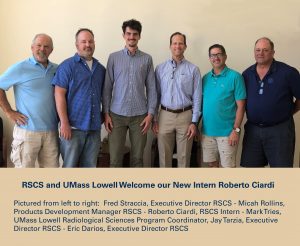 We are pleased to announce that RSCS, in partnership with the University of Massachusetts at Lowell, has sponsored Mr. Roberto Ciardi to complete his Master’s degree thesis on an international collaboration with the University of Pisa and the Sant’Anna School of Pisa in Italy. Roberto received his Bachelor’s degree in Computer Engineering from the University of Pisa in 2015. Upon completing his thesis, he will receive his Master’s degree in Embedded Software Systems from the Sant’Anna School of Pisa in collaboration with University of Pisa.
We are pleased to announce that RSCS, in partnership with the University of Massachusetts at Lowell, has sponsored Mr. Roberto Ciardi to complete his Master’s degree thesis on an international collaboration with the University of Pisa and the Sant’Anna School of Pisa in Italy. Roberto received his Bachelor’s degree in Computer Engineering from the University of Pisa in 2015. Upon completing his thesis, he will receive his Master’s degree in Embedded Software Systems from the Sant’Anna School of Pisa in collaboration with University of Pisa. 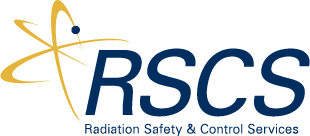
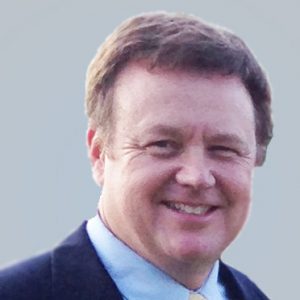 RSCS is pleased to welcome Ron Thurlow to our growing management team as our Director of Operations! Mr. Thurlow has an M.S. and B.S. in Radiological Sciences and Protection and is certified by the American Board of Health Physics. Mr. Thurlow has served as the President of the Health Physics Society Power Reactor Section and has been a contributor and principle investigator for various EPRI Guideline documents.
RSCS is pleased to welcome Ron Thurlow to our growing management team as our Director of Operations! Mr. Thurlow has an M.S. and B.S. in Radiological Sciences and Protection and is certified by the American Board of Health Physics. Mr. Thurlow has served as the President of the Health Physics Society Power Reactor Section and has been a contributor and principle investigator for various EPRI Guideline documents. 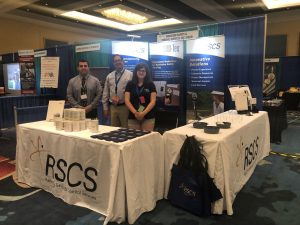 RSCS is exhibiting this week at the 2019 Annual Health Physics Society Meeting in Orlando Florida. We always look forward to this meeting as it provides an opportunity to network with our long-term friends and colleagues in the Health Physics community, and catch up with our fellow alumni from UMass Lowell. If attending this meeting, please come by to say hello at booth #415.
RSCS is exhibiting this week at the 2019 Annual Health Physics Society Meeting in Orlando Florida. We always look forward to this meeting as it provides an opportunity to network with our long-term friends and colleagues in the Health Physics community, and catch up with our fellow alumni from UMass Lowell. If attending this meeting, please come by to say hello at booth #415.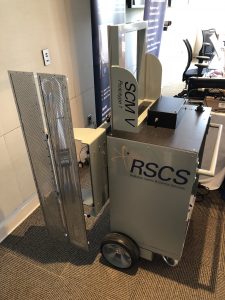 RSCS is showcasing our latest version of the Surface Contamination Monitor, the SCM V, at the Naval Surface Warfare Center Industry Day held in West Bethesda, MD on June 11, 2019.
RSCS is showcasing our latest version of the Surface Contamination Monitor, the SCM V, at the Naval Surface Warfare Center Industry Day held in West Bethesda, MD on June 11, 2019.  For Immediate Release
For Immediate Release 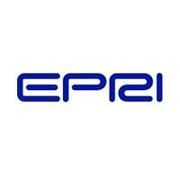 Meeting the demand for well-trained RP technicians to provide support during nuclear utility outages has become more challenging as this work force has been steadily decreasing. This scarcity has driven up the cost of staffing outages for nuclear utilities that are already at a disadvantage in our current economically competitive energy marketplace. Professionals at EPRI have been investigating ways to reduce the cost of mobilizing the nuclear industries’ temporary mobile workforce of RP technicians, and identified site specific training for industry-wide maintenance tasks as an area that could be improved upon. To streamline the training requirements for outage RP technicians, EPRI developed a standardized system for assessing their training and qualifications through the Standardized Task Evaluation (STE) Program.
Meeting the demand for well-trained RP technicians to provide support during nuclear utility outages has become more challenging as this work force has been steadily decreasing. This scarcity has driven up the cost of staffing outages for nuclear utilities that are already at a disadvantage in our current economically competitive energy marketplace. Professionals at EPRI have been investigating ways to reduce the cost of mobilizing the nuclear industries’ temporary mobile workforce of RP technicians, and identified site specific training for industry-wide maintenance tasks as an area that could be improved upon. To streamline the training requirements for outage RP technicians, EPRI developed a standardized system for assessing their training and qualifications through the Standardized Task Evaluation (STE) Program. 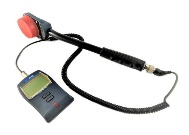 RSCS will exhibit at the Mirion Connect 2018 Users’ Conference in Bonita Springs FL from August 6-10, where we will demonstrate our SIM-Teq training simulator product line. Several new models will be available for demonstration, including the RDS-31TD and the TelepoleTD. These latest models to be added to the SIM-Teq product line, which includes other model survey meters and dosimeters, are built with OEM hardware, providing the functionality of the real radiation survey instruments as they detect and respond to our simulated TWR “live” sources of radiation.
RSCS will exhibit at the Mirion Connect 2018 Users’ Conference in Bonita Springs FL from August 6-10, where we will demonstrate our SIM-Teq training simulator product line. Several new models will be available for demonstration, including the RDS-31TD and the TelepoleTD. These latest models to be added to the SIM-Teq product line, which includes other model survey meters and dosimeters, are built with OEM hardware, providing the functionality of the real radiation survey instruments as they detect and respond to our simulated TWR “live” sources of radiation.  RSCS made several presentations this week at the Radiological Effluents and Environmental Workshop (REEW) in New Orleans, LA organized by the Nuclear Energy Institute. This meeting provides professionals in the nuclear power industry the opportunity to share innovated methods for environmental monitoring. Our staff was invited to present to this forum to share insights and approaches that have been developed over several decades of working with operational and decommissioning nuclear facilities, providing environmental monitoring services that measure and characterize radioactivity in liquid and airborne effluents, soils, subsurface structures and groundwater.
RSCS made several presentations this week at the Radiological Effluents and Environmental Workshop (REEW) in New Orleans, LA organized by the Nuclear Energy Institute. This meeting provides professionals in the nuclear power industry the opportunity to share innovated methods for environmental monitoring. Our staff was invited to present to this forum to share insights and approaches that have been developed over several decades of working with operational and decommissioning nuclear facilities, providing environmental monitoring services that measure and characterize radioactivity in liquid and airborne effluents, soils, subsurface structures and groundwater.